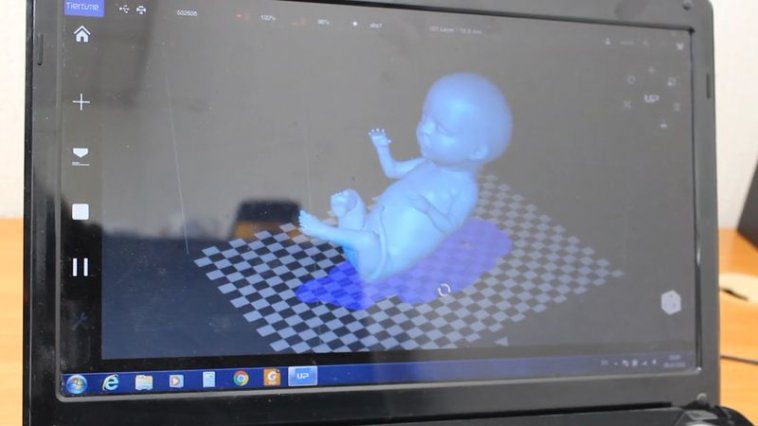Embryo 3D offers standard and metal-plated 3D printed models of fetuses crafted from ultrasound scans.
Parents-to-be are now able to get their hands on a 3D printed model of their unborn child. Created by Embryo 3D, the process uses ultrasound scans to craft the plastic models of the fetus.
Incredibly, the printing process manages to capture even the smallest details on the hands and feet.
Ivan Gridin, head of Embryo 3D, said that the company also offers gold-plated and metal-plated versions.
Although traditionally the models were only available in plastic, they are now made using plaster models to enable metal coverings.
However, the 3D printed embryos do not just serve as memorabilia. Yuliana Recu, an expectant mum taking part in the trials described a “weird feeling” as she touched a model of her unborn child.
The idea for Embryo 3D came to Gridin when he was worried about a friend and the health of her unborn child. Already a user of 3D printing, Gridin decided to print a model from the ultrasound scan.
Therefore, the technology may also offer opportunities for medical decision-making to help parents uncover birth defects.
3D imaging technologies allow doctors and researchers to inspect fetal anatomy
Researchers in Brazil launched a 3D imaging technology in 2016 that allowed parents to view realistic images of their unborn children.
They used the Oculus Rift virtual reality headset to bring magnetic resonance imaging (MRI) and ultrasound scans to life. Parents could then view sharp and realistic images of the fetus instead of the traditionally blurred polaroids.
The technology layers MRI scans to create an accurate model.
Indeed, 3D models of fetuses enable researchers to gain an enhanced understanding of the anatomy of the unborn child. These can serve educational purposes, but in the future may also be utilized as part of personalized medicine packages.
The advantage of the virtual reality models is that they are more life-like. Even the internal anatomy of a fetus can be recreated to observe abnormalities.
Using the Oculus Rift 2, doctors have been able to create a more realistic environment to observe the fetal anatomy. This has also allowed them to make a better decision when it comes to the delivery and post-delivery treatments if necessary.
Source: 9news.com.au (images: Rutly)
Website: LINK




